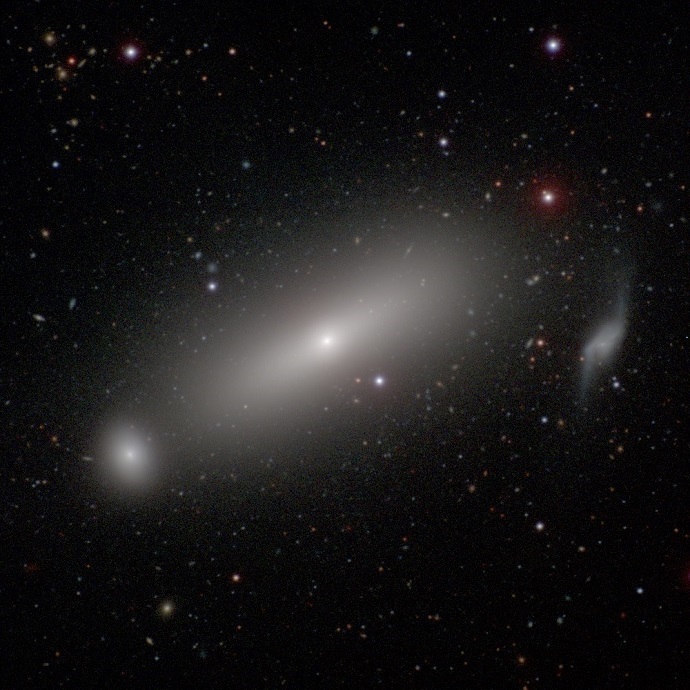May 5, 2016
By Todd B. Bates
It’s about 660 million times as massive as our sun, and a cloud of gas circles it at about 1.1 million mph.
This supermassive black hole sits at the center of a galaxy dubbed NGC 1332, which is 73 million light years from Earth. And an international team of scientists that includes Rutgers associate professor Andrew J. Baker has measured its mass with unprecedented accuracy.
Their groundbreaking observations, made with the revolutionary Atacama Large Millimeter/submillimeter Array (ALMA) in Chile, were published today in the Astrophysical Journal Letters. ALMA, the world’s largest astronomical project, is a telescope with 66 radio antennas about 16,400 feet above sea level.
Black holes – the most massive typically found at the centers of galaxies – are so dense that their gravity pulls in anything that’s close enough, including light, said Baker, an associate professor in the Astrophycis Group in Rutgers’ Department of Physics and Astronomy. The department is in the School of Arts and Sciences.
A black hole can form after matter, often from an exploding star, condenses via gravity. Supermassive black holes at the centers of massive galaxies grow by swallowing gas, stars and other black holes. But, said Baker, “just because there’s a black hole in your neighborhood, it does not act like a cosmic vacuum cleaner.”
Stars can come close to a black hole, but as long as they’re in stable orbits and moving fast enough, they won’t enter the black hole, said Baker, who has been at Rutgers since 2006.
“The black hole at the center of the Milky Way, which is the biggest one in our own galaxy, is many thousands of light years away from us,” he said. “We’re not going to get sucked in.”
Scientists think every massive galaxy, like the Milky Way, has a massive black hole at its center, Baker said. “The ubiquity of black holes is one indicator of the profound influence that they have on the formation of the galaxies in which they live,” he said.
Understanding the formation and evolution of galaxies is one of the major challenges for modern astrophysics. The scientists’ findings have important implications for how galaxies and their central supermassive black holes form. The ratio of a black hole’s mass to a galaxy’s mass is important in understanding their makeup, Baker said.
Research suggests that the growth of galaxies and the growth of their black holes are coordinated. And if we want to understand how galaxies form and evolve, we need to understand supermassive black holes, Baker said.
Part of understanding supermassive black holes is measuring their exact masses. That lets scientists determine if a black hole is growing faster or slower than its galaxy. If black hole mass measurements are inaccurate, scientists can't draw any definitive conclusions, Baker said.
To measure NGC 1332’s central black hole, scientists tapped ALMA’s high-resolution observations of carbon monoxide emissions from a giant disc of cold gas orbiting the hole. They also measured the speed of the gas.
“This has been a very active area of research for the last 20 years, trying to characterize the masses of black holes at the centers of galaxies,” said Baker, who began studying black holes as a graduate student. “This is a case where new instrumentation has allowed us to make an important new advance in terms of what we can say scientifically.”
He and his coauthors recently submitted a proposal to use ALMA to observe other massive black holes. Use of ALMA is granted after an annual international competition of proposals, according to Baker.
ALMA is an international partnership of the National Radio Astronomy Observatory, European Southern Observatory and National Astronomical Observatory of Japan in cooperation with Chile. U.S. access to ALMA comes via the National Radio Astronomy Observatory, which is supported by the National Science Foundation.
Coauthors of the study of NGC 1332’s central black hole include: lead author Aaron J. Barth, Benjamin D. Boizelle and David A. Buote of the University of California, Irvine; Jeremy Darling of the University of Colorado; Baker; Luis C. Ho of the Kavli Institute for Astronomy and Astrophysics at Peking University in Beijing, China; and Jonelle L. Walsh of Texas A&M University.















